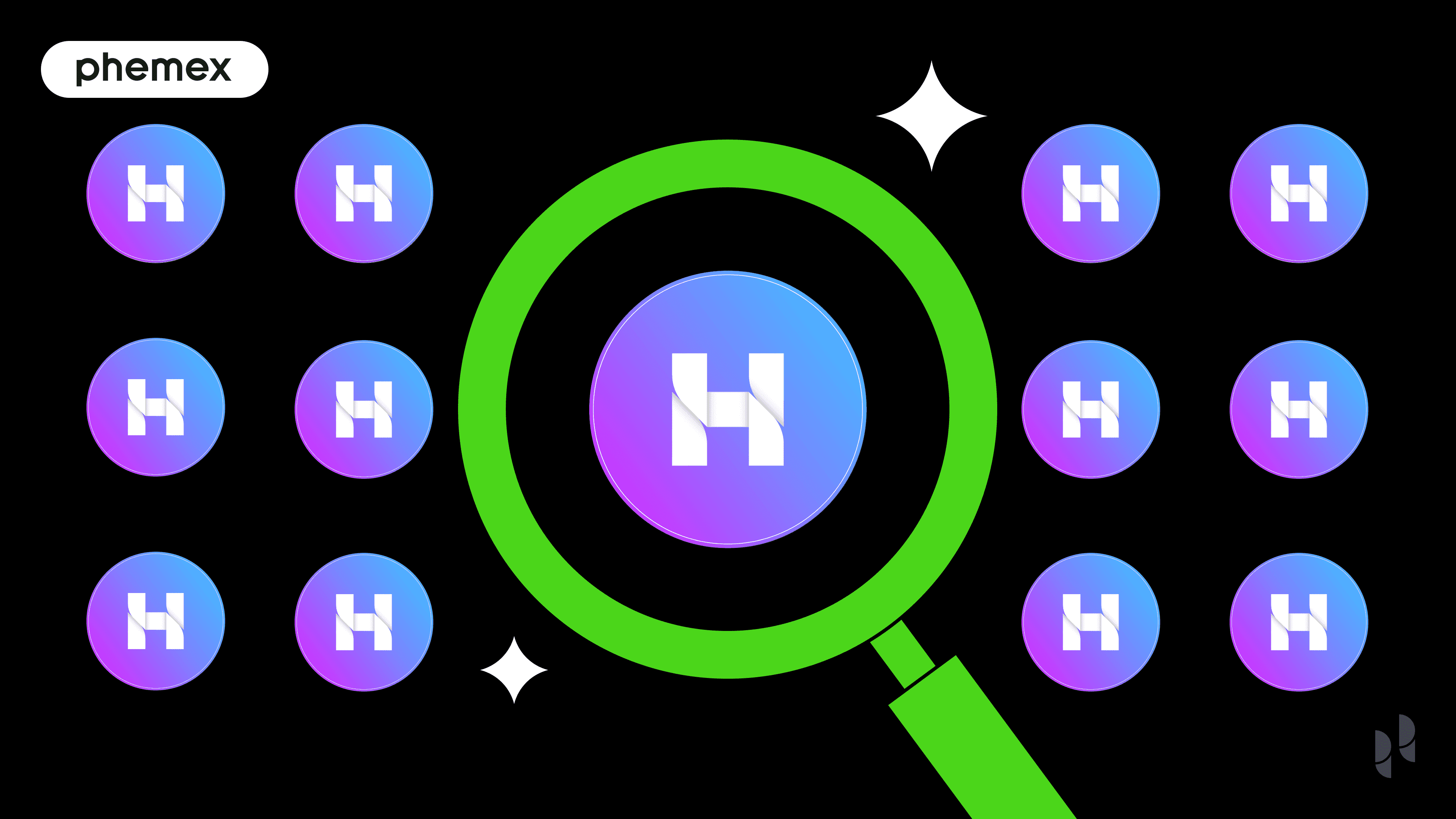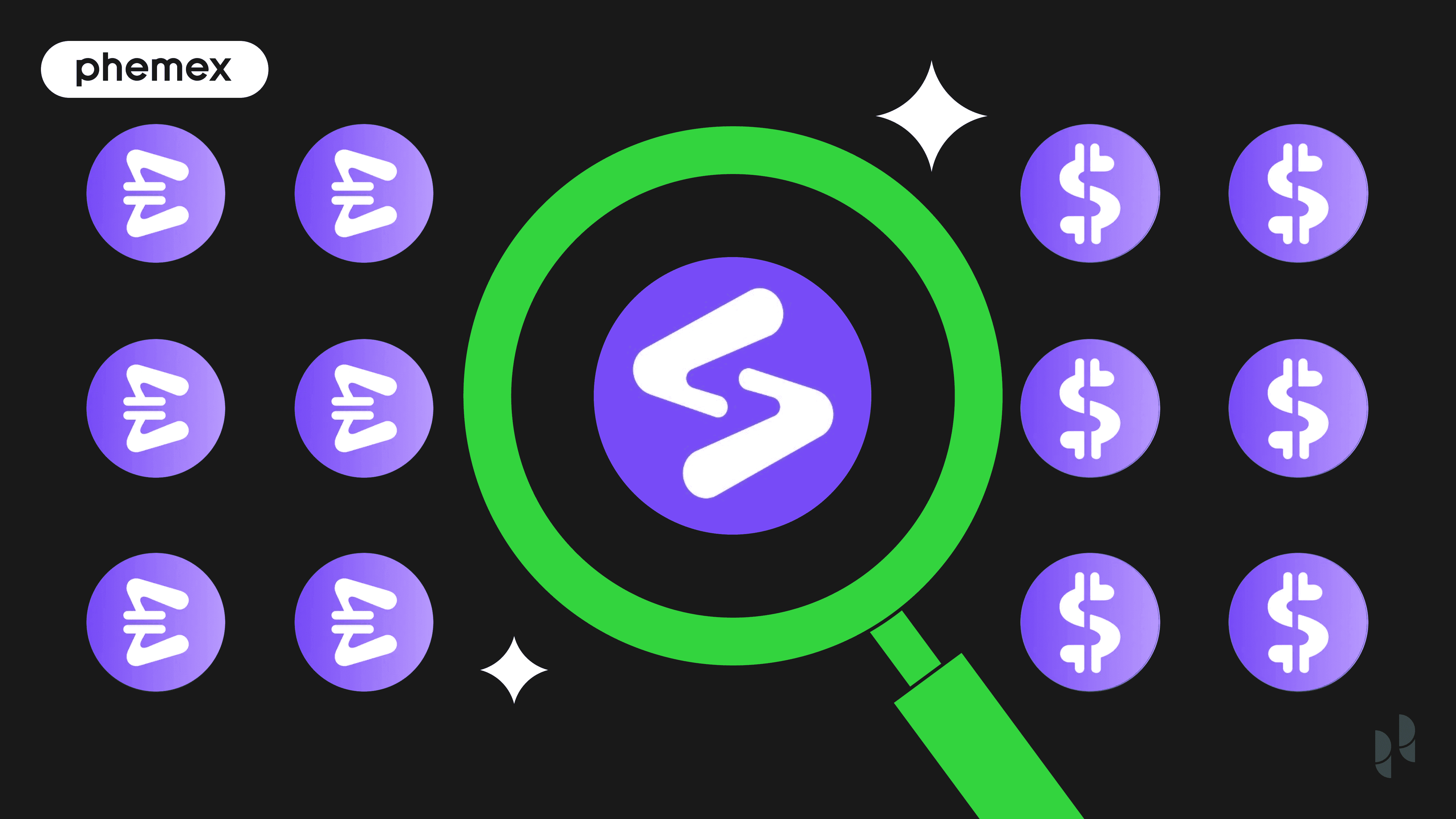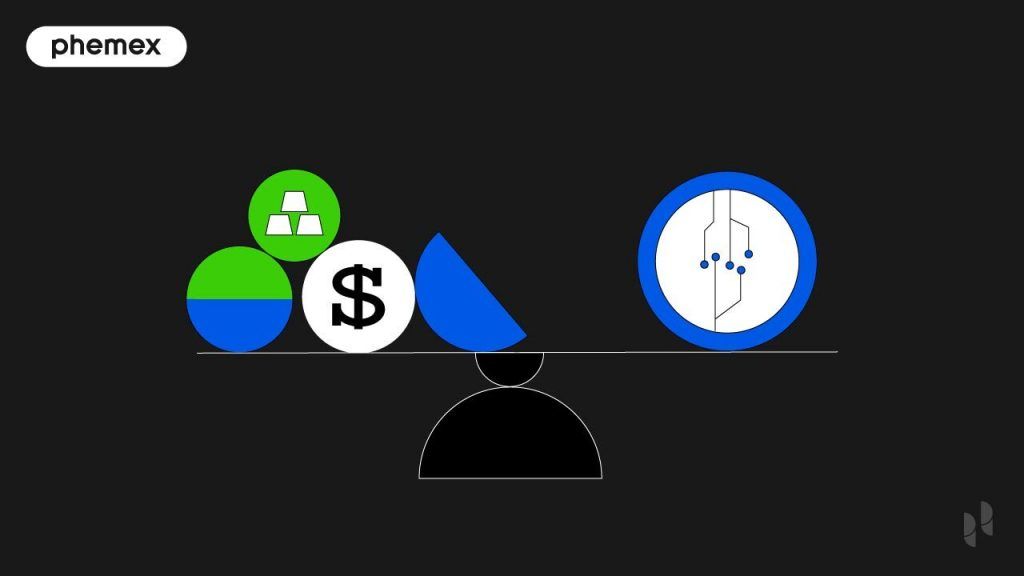Update (May 2022): The Terra Luna Crypto Collapse
In May 2022, Terra Luna crashed and burned, wiping out tens of billions of dollars from the pockets of both retail and institutional investors.
At its peak, which was just a month earlier, Terra’s native governance token Luna was trading at $120, and the Terra blockchain overtook Solana to become the sixth largest cryptocurrency by market cap. With almost $19 billion in circulating supply, Terra’s stablecoin UST was the third largest stablecoin after USDT and USDC, which was why its downfall was so shocking.
And yet, in certain circles, it was not wholly surprising. Of particular note is the fact that the bulk of the demand for UST was coming from one protocol on the Terra blockchain, the Anchor protocol, which had locked up about 80% of all the UST in circulation. And this was because it was offering a fixed interest rate of 20% p.a. on UST, something no other crypto firm was able to beat. Early detractors pointed out the unsustainability of such a scheme, but any criticism was brushed off with no small amount of derision by co-founder and CEO Do Kwon.
The collapse of Terra Luna also shone the spotlight on the soundness of algorithmic stablecoins like UST. Being uncollateralized by definition, algorithmic stablecoins are more capital-efficient but at the same time, are more prone to speculative attacks and manipulation. The fact that the UST supply was linked to valuation of the governance token of the blockchain made it even more vulnerable to devaluation risk.
When the UST lost its 1:1 peg to the USD amid souring market sentiments, it triggered a loss of confidence in the entire Terra ecosystem, including its LUNA token. Even its Bitcoin reserves ($1.8 billion in early May), meant to provide reinforcement for the entire protocol, did nothing to fend off an unstoppable spiral. On May 12, the price of Luna fell 96% to under $0.10 within just 24 hours, with the UST faring no better. In the ensuing days, Bitcoin dropped by 20% and most altcoins by 50% or more.
On May 28, Terra 2.0 launched, but after climbing to over $11, it lost more than 56% in value against the USD.
—
As decentralized finance (DeFi) moves to become increasingly mainstream, the crypto community is looking for ways to stabilize crypto and make it viable for real-world adoption.
Terra Luna is a blockchain protocol that aims to do this by providing an ecosystem for algorithmically governed, decentralized stablecoins that are pegged to currencies across the globe. Despite the Terra protocol having multiple cryptocurrencies running in its ecosystem, it only has one native governance token, the LUNA Token.

The Terra Luna price, or LUNA token price at the time of writing, is $102.47, with a circulating supply of 354.7 million LUNA for a market cap of $36.3 billion.
What Is Terra Luna?
Terra Luna is a blockchain built around a family of stablecoins to enable easy crypto transactions on a global scale. Recognizing that most stablecoins, such as Tether (USDT), are pegged to the value of the USD, the Terra Luna founders saw a window for the growth of global crypto adoption with real-world usage. This outward-looking approach for the growth and adoption of crypto, is what makes Terra different from other blockchain networks and stablecoin protocols. It does this in two ways:
- Decentralized applications (DApps): Rather than primarily focusing on being interoperable with other DeFi protocols (even though it does that too), Terra seeks to create stable, scalable products that drive immediate real-world adoption in its own Terra ecosystem of DApps. These include e-commerce crypto payment solutions such as CHAI, MemePay, and PayWithTerra, and high-yield saving solutions such as Anchor, and so on.
- Family of Terra stablecoins: By creating a family of stablecoins, each one pegged to different currencies across the globe, Terra offers users the ability to use Terra’s USD stablecoin (UST) for their daily purchases in the US and also pay for services in Korea or Europe with their Terra stablecoins, KRT and EUT respectively. By providing compatible and international stablecoins that can be exchanged, sent, and spent in an instant and with low fess, the Terra crypto aimed to boost real-world adoption of crypto on a global scale.
Within a short period, Terra Luna saw swift adoption and growth of its native Terra Luna token (LUNA), as well as the creation of the most used stablecoin in its ecosystem, TerraUSD (UST). The LUNA token, currently the 8th largest crypto asset on the market, is one of the fastest-growing cryptocurrencies in the industry. The TerraUSD, or UST, on the other hand, rapidly became one of the most adopted stablecoins on the market.

What Is The Terra Alliance?
The Terra protocol was developed in January 2018 by Terraform Labs, a Korean blockchain enterprise founded by Daniel Shin and Do Kwon. The company was incubated by a conglomerate known as the Terra Alliance, a collective of 15 Korean and Southeast Asian e-commerce companies that processes $25 billion in transactions annually.
Aside from Terra Alliance’s support, Terraform Labs also received $32 million in backing from prominent venture capital firms such as Coinbase Ventures, Polychain Capital, and Pantera Capital.
Before founding Terra, Shin and Kwon both established successful companies outside of the blockchain industry. Shin founded TMON, an e-commerce enterprise otherwise known as South Korea’s Alibaba, and CHAI, a softbank-backed Korean payment app with more than 2.7 million users.
Do Kwon, on the other hand, studied computer science at Stanford and made the Forbes 30 under 30 list in 2019. Prior to co-founding Terra, Kwon worked at Microsoft and founded Any-Fi, a startup specializing in peer-to-peer telecommunications solutions such as meshed Wi-Fi networks.
The intention behind Terra is to create a backend protocol for various applications developed by Terraform Labs and the Terra Alliance that would have immediate real-world applications.
The Terra Luna Ecosystem: Building Stable, Scalable DApps
Terra is a Turing-complete blockchain protocol that wants to bring DeFi to the real world. To do this, the network encourages developers to build on its blockchain with a view to offer a stable, scalable DeFi ecosystem. Some of its most prominent DApps include:
- Anchor: A savings protocol built on Terra, Anchor lends out deposits from borrowers who have put up “liquid-staked PoS assets” in return for a 20% APR. In February 2022, Anchor’s offering convinced the Terra Luna community to vote to fund it with a pump of 450 million UST.
- WeFund: A decentralized cross-chain incubator platform specifically designed for community crowdfunding, WeFund links DeFi and blockchain with community spirit and charity. As well as being decentralized, WeFund uses smart contracts and the Terra blockchain to ensure security and transparency, thereby showing how blockchain technology can be beneficial to real-world fundraising scenarios.
- Mirror: A DeFi protocol that creates synthetic assets called Mirrored Assets (mAssets) to mimic the price behavior of real-world assets such as stocks or bonds, Mirror aims to allow anyone anywhere to trade and own stocks in a decentralized manner. To do this, users can mint new tokens for mAssets by creating a collateralized debt position (CDP) using either UST or other mAsset tokens as collateral.
- BetTerra: Although yet to be launched, BetTerra will bring the world of gambling, gaming, and charity onto the blockchain. Using Gamefi and betting in a secure and transparent way through the Terra blockchain, BetTerra will also use some gains, in the form of UST, to give back to society. In this way, the DApp links very popular real-world activities, such as gaming and gambling, with blockchain security and then adds an element of charity.
The Terra Luna ecosystem offers a wide variety of DeFi applications, but all share the core principles of Terra Luna crypto — decentralization, security, real-world application, and community.

The Terra – Luna Ecosystem (Source: Terra.Money)
Terra Luna Crypto: What are Luna Tokens and Terra Coins
Terra Luna cryptocurrency can be somewhat confusing, as not only does it have its own platform token, the LUNA token, but it also has a whole family of Terra stablecoins, known in its group form as TerraSDR. There is also confusion over how Terra stablecoins are more stable than other stablecoins in the market. To gain clarity on this, continue reading.
What Is The Luna Currency?
The Terra Luna blockchain has its own Luna currency, in the form of LUNA, as well as the Luna currencies within its ecosystem, the Terra stablecoins.
- LUNA token: LUNA is the native staking token for the network, as well as being the foundational asset for the entire ecosystem. It has two main functions.
- Staking: As the network is run on a proof-of-stake (PoS) consensus mechanism, it requires staking nodes (as opposed to miners) to validate transactions. The LUNA token is used to reward these staking nodes for maintaining the blockchain’s security.
- Stability: The LUNA token is also used to ensure the stability of Terra stablecoins, as they are inextricable linked to create stability. Terra stablecoins are only produced when the equivalent LUNA is burnt, allowing for the hedging of assets. For example, if the LUNA token price increases by 50% against the USD, then 1.5 times more UST will be issued to keep a balance. Likewise, if the LUNA token price drops by 25%, then more Luna coins can be redeemed for UST.
- TERRA stablecoins, or TerraSDR: The Terra ecosystem’s stablecoins, from UST to KRT, form the blockchain’s main offering. Users can use these to pay for DeFi services, invest in savings protocols, or transfer money across the globe.
Are Terra Stablecoins Less Volatile Than Other Stablecoins in The Market?
The Terra stablecoin achieves price stability by adjusting its supply according to real-time fluctuations in demand.
To mint a UST, users need to burn an equivalent dollar amount of LUNA tokens. For example, if you want to mint 150 UST and Luna’s current market price is $5, you would have to burn 30 LUNA tokens. Vice versa, if you burn 50 UST, and LUNA’s current market price is $10, you will receive 5 LUNA tokens.
Through this method, Terra leverages market forces to achieve price stability for its stablecoins. When UST’s price deviates above $1, arbitrageurs can step in to collect risk-free profits by purchasing the UST currently worth more than $1 for $1 worth of LUNA and then immediately sell that UST for a profit. Therefore, Terra stablecoins rarely deviate much from their peg.
The Terra stablecoin aims to differentiate itself from other algorithmic stablecoins on the market through this mechanism in order to achieve greater capital efficiency and scalability.

The Terra Stablecoin Ecosystem (Source: Terra YouTube)
What Is Luna Foundation Guard (LFG)?
Despite Terra’s protocol maintaining price stability by leveraging the market forces, it still depends on a certain threshold of demand within the Terra ecosystem, either through LUNA’s price or Terra’s transaction volume, to work.
This is because value enters the Terra ecosystem through exchanges between fiat and Luna, meaning the system’s stability depends on the demand for various Terra products and stablecoins. As Terra’s adoption rate rises, Luna’s value is maintained, which guarantees stable mining rewards for stakers and further stabilizes the entire system. However, if the demand decreases too much, the system is disrupted, validating nodes cannot be rewarded, the security is compromised, and it breaks down. To avoid this, Terra was already boosting mass adoption through CHAI and other successful products built by the Terra Alliance members. However, with the 2021 bear market and another on the horizon in 2022, the founders decided to act.
The Luna Foundation Guard (LFG) was set up by Terra co-founder, Do Kwon, who saw a need to add another stabilizing layer to Terra stablecoins. The LFG acts to secure the Terra protocol by buying up BTC to add to the reserves for its most popular stablecoin, UST.
The intended effect of this BTC buying spree is to minimize damage to the Terra Luna protocol, and by extension the LUNA token, in addition to boosting the wealth of the protocol. At the time of writing, the LFG is in the process of raising $3 billion, with at least $2.2 billion already raised, to buy BTC.
The plan for LFG is to help maintain a UST peg to the dollar during downward peg deviations. This will go hand in hand with the coin maintaining its dollar peg by issuing and destroying LUNA tokens.
How Does Terra Work?
As with all decentralized protocols, the Terra network ensures its security and transparency through blockchain technology and consensus mechanisms. In particular, the Terra blockchain is built using the Cosmos SDK and the Tendermint Delegated-Proof-of-Stake (DPoS) consensus mechanism.

The protocol relies on a set of 100 validators who verify, settle transactions, and secure the system by running full nodes to commit blocks to the blockchain. Their primary role is to help the decentralized network reach and maintain consensus on the blockchain by broadcasting votes containing cryptographic signatures signed by each validator’s private key.
In order to participate in broadcasting, validators must either bond (lock for a minimum of 21 days) their own LUNA tokens or have LUNA tokens delegated/staked to them by other token holders. Luna holders that decide to participate in staking are called delegators and share the same benefits and responsibilities as the validators.
This means that while the delegators get to participate in securing the network and earn a portion of the revenue generated by the validators, if that validator misbehaves (double-signs transactions or remains inactive for a prolonged period) and gets slashed, the delegators will also get slashed.
In general, the Terra protocol has two primary ways of rewarding the validators and their delegators:
- Transaction fees: To prevent spamming, all transactions require a small fee paid out to stakers. These default to 0.1% of the transaction value and are capped at 1%, making Terra a superior settlement layer compared to traditional payment processors such as credit cards, which charge significantly higher transaction fees.
- Scarcity incentives: To further incentivize adoption, the protocol charges a small fee on all swap transactions between Luna and other Terra stablecoins. The swap fees are then burned, creating scarcity in Luna, which indirectly rewards all Luna token holders.
In the spirit of decentralization, Terra validators can also participate in the protocol’s governance by voting on various protocol improvement proposals made by the community. The voting power of the community is proportional to their total staked amount, including delegations, however, it’s important to note that Terra’s blockchain design sacrifices overall decentralization for speed and scalability. That is to say, Terra is considerably less decentralized than some proof-of-work-based blockchains, but it makes it up by delivering orders of magnitude higher transaction throughput.
LUNA Token Price Analysis
Despite being developed in 2018 and launched in 2020, the Terra Luna price did very little until 2021. This was a time when the rise of altcoins and DeFi began to attract a much wider audience to crypto, meaning that having a global network of easily transferable, exchangeable, and compatible stablecoins was very convenient.
From being valued at only $0.65 on January 1, 2021, the LUNA token price went on to reach highs of nearly $100 on December 26, 2021. It did experience some volatility along the way, not being completely immune to the 2021 crypto crash, but its offering and novel technology in maintaining the pegging of its stablecoins to their currencies kept it afloat more than other cryptocurrencies.
Entering the new year, the Luna Terra price experienced a dramatic drop, with its Luna token price falling to $46 on January 30, 2022. During this period, the founders realized that the stability of their Terra stablecoin offering was their priority, as not only was it a major selling point, but it also backed up the rest of the ecosystem. On January 26, 2022, LFG began buying up BTC — 8,588 BTC on that day alone. By the end of February, the Luna token price was back up to $91.14, and with the formal announcement of the LFG’s plans in March, the Terra Luna price surpassed its previous record and hit an all-time-high of $109 on March 29, 2022.


Conclusion
While most crypto projects are either trying to cater to existing crypto users or onboard new ones, Terra harbors a grand vision of bringing crypto to real-world products and services that people are already using, without the need to know how crypto protocols work.
Judging by what Terra has already achieved in the two short years since its launch, it seems they have found a product-market fit for their stablecoin and DeFi solutions. At the same time, Terra Luna knows that volatility and scalability are constant challenges standing in the way of global-scale crypto adoption. With its innovation in stablecoins and development of an entire DeFi ecosystem, however, one thing is clear–Terra Luna is on a seemingly unstoppable momentum to fuel crypto adoption in the real world.
Read More
- TerraUSD (UST): The Stablecoin That Made LUNA Successful
- What Is DeFi Llama: A DeFi Analytics Dashboard for Professional DeFi Traders
- All You Need to Know About Stablecoins: Cryptocurrency’s Gold Standard
- What is Lido: The Future of Liquidity Staking on Ethereum 2.0?
- What Is DeFi: How To Be Your Own Bank With $100
- https://phemex.com/academy/defi
- What Are LP Tokens? A Step-by-Step Guide to Creating Your Own LP Token & Launching a Coin
- What is Anchor Protocol: The Savings Account of The Future?








